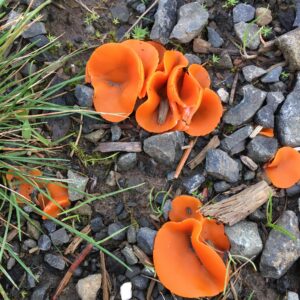
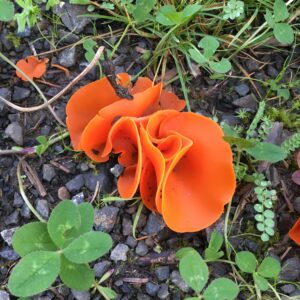
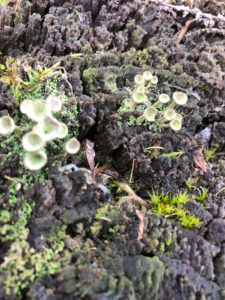


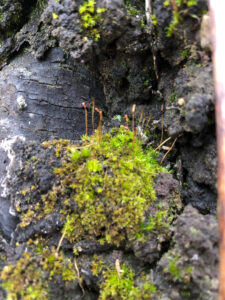
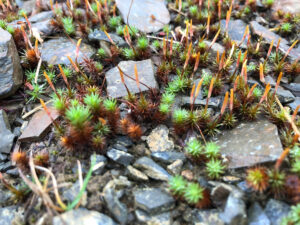
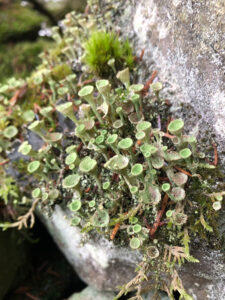


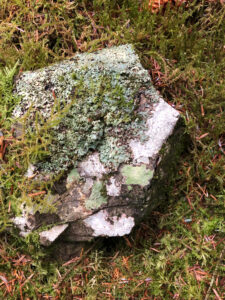
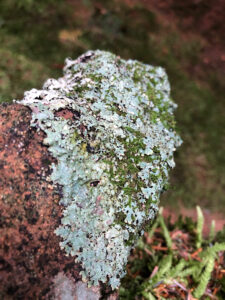
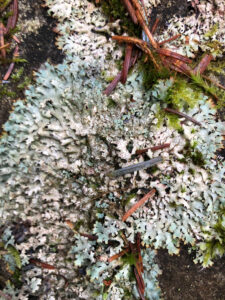
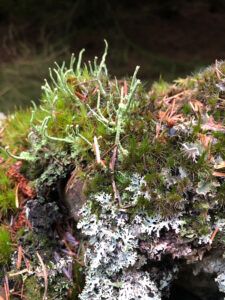
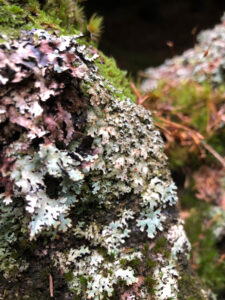



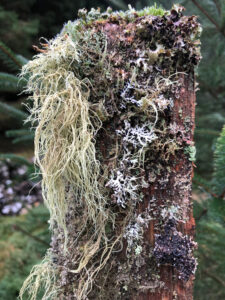
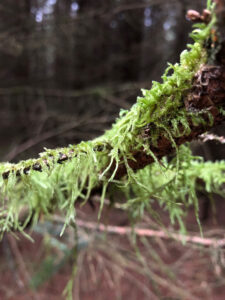
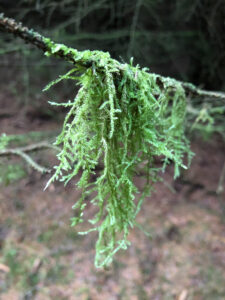
Mushroom/mould growth on objects
Growth idea:
Create 3D printed or paper heads in order to grow mould or mushrooms on them. Depicting the slow decay of humans, yet at the same time, the beauty and renewal of life. Also try it with paper back books/printed photographs.
3D printed heads: coat them in Agar solution when it is nearly set to created an encompassing film of product to enable the growth of moulds. To keep it in a safe environment, encapsulate it in a glass dome:

Paper sculptures: create sculptures of heads using compressed paper balls, using a Dremel to carve out the facial features. Using the same techniques as used for growing mushrooms onto paper back books, attempt to see if it will work using the paper sculptures:
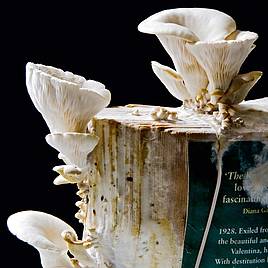
Paper back books/photographs:
Grow mushrooms onto paper back books using some kits I bought. Selecting books about murders of women, or known murderers of women such as Jack the Ripper. Using the heat press, print my female portraits onto thick paper/card and attempt the same method using these, to grow mushrooms onto the photographs.
Ideas for Semester Two
Preliminary ideas to work on throughout semester 2/3:
- Pencil illustrations, explore the link of mushrooms and female anxiety/suffering. Try and introduce colour to work with it more
- Paintings/pastel drawings of detailed parts of mushrooms, explore the colours and textures. Explore the relation/similarities to genitalia
- Create textural collages of the tiny worlds of fungi/moulds/lichen
- Explore mushroom prints, onto photographic film or drawings
- Make more models in 3D printing, clay, paper
- Explore the idea of growing mould/mushrooms on books or figures/photographs
- Explore the theme of networks, roots, growth
- Explore the idea of making mackets/dioramas of murder scenes or related areas to depict the relation of mushroom growth and murders
Personal Goals:
- Try working with colour more
- Explore the abstract side of my work
- Try new mediums and styles: pastels, thick paints and making marks
- Do not other think or plan, try your ideas out as they come!!
Artists to explore:
- Li Hongbo
- Georgia O’Keeffe
- Horst Kiechle
- Lee Ellis
Mold Growth
https://sciencing.com/does-mold-grow-faster-in-the-light-or-dark-13420833.html
Second, the mold spores must have a source of food to grow on. Mold can grow on a variety of household substances, from rotting fruit and vegetables to wooden panels or fabrics. Mold is sometimes found growing on inorganic substances like plastic or steel. When this happens, the mold is still feeding on an organic substance that is on its surface, such as the oil leftover from a person’s fingerprints, organic fibers or residue from an organic cleaning substance.
Light is not one of the key resources mold needs to grow. This is because, unlike plants, mold is not photosynthetic and doesn’t use light to generate energy. In fact, light from the sun can inhibit mold growth and even kill it, so many molds thrive and grow better in dark environments.
https://www.legalinfo.com/content/toxic-mold/mold-types-and-causes.html
Mold is a fungus that exists both indoors and outdoors, but not all molds are toxic. Many are harmful, but only a few types of mold can cause potentially serious injury. Most simply cause symptoms similar to those of seasonal allergies. Some, however, can cause more serious illnesses, such as pulmonary edema, brain damage, and emphysema. In some case of prolonged exposure, death may result. The common indoor molds are Cladosporium, Aspergillus, Stachybotrys, Fusarium, Penicillium, and Alternaria.
Different sculpture materials
When considering mushrooms and nature in general:
I was walking along a beach collecting urchin shells, which are extremely delicate. I collected around 20, was very careful with them, and only two made it home in once piece.
The beach this day was particularly stormy, it was extremely windy and the sea was rough. Yet these little delicate spheres had weathered that storm, made it through the tides to come to this resting point on the shoreline.
This led me to consider the fragility of nature, how when we take it from its original space, it instantly becomes in danger. When I thought of the mushrooms I have been looking at, and how so delicately tiny they are that one touch could crush them entirely, or turn them to their liquid state.
I am now thinking of ways to mirror this fragility and impermanence within my work, by making some mushrooms from:
- edible paper, as this is extremely delicate in itself and also, like mushrooms at the end of their time, the work will dissolve
- icing, again it is fragile and not permanent and can be easily manipulated for the delicate parts of the mushrooms e.g the gills underneath
- regular paper, again is delicate and could be seen as impermanent if left outside
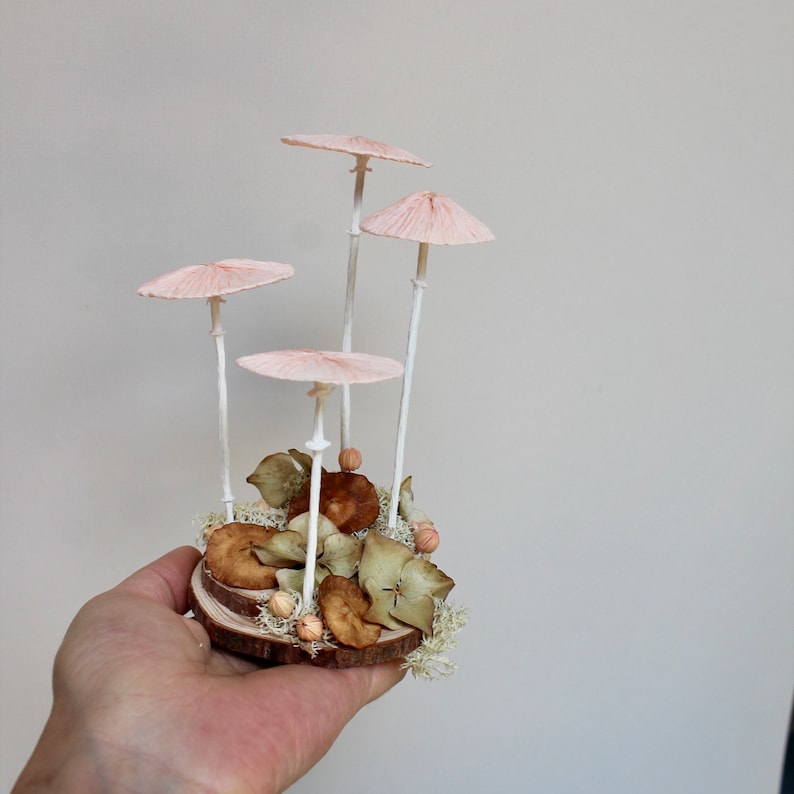 .
. 
Could create the base for an interactive art piece. The addition of water/the effects of weather would shape this artwork and erode it as time goes on, could link back to the theme of women in society once again
Sculptures
metal mushroom sculptures:
Following on from the idea of Kintsugi, I am going to create some metal sculptures of mushrooms, which will come out from the cracks in walls in buildings.
The idea behind this is to explore how nature can reclaim and rebirth from the smallest of spaces and in places that you may not expect. Allowing nature into a rural scene, suggesting that nature could fix what we as humans have done towards it when considering out current climate disaster.
Comparing mushrooms to the human form
From researching mushrooms, I can see many comparisons between mushrooms and the anatomy of the body, especially sexual organs.
Could be an interesting way to explore in a more suggestive way.
- Stinkhorn mushroom
- Ghost pipe mushrooms
- puffballs
- the gills underneath mushroom caps
Exploring the roots
Thoughts on how to explore the roots of mushrooms to show the hidden networks underground:
- grow some in a terrarium
- grow some in water? In a glass container?
- similar to the idea of an ant farm
Could also use a glass tank and artificially create a “roots system”.
Could be lit? Taking on from glow in the dark mushrooms. Could also feed mushrooms with liquid UV and see if I can create my own glow in the dark mushrooms?
Artificial roots could be strings of lights, could spread out from the display.
Mould Growth
on Thursday 14/10/21
Created two petri dishes:
Petri dish one: contains samples of “DNA”, saliva, hair, nails, bottom of shoe
Petri dish two: contains samples of mushrooms and food mould
I will be documenting their growth and seeing what works best. I then want to experiment placing my negatives from my initial photoshoot with Julia within the petri dish so that the mould can grow freely over the image.
Photographs

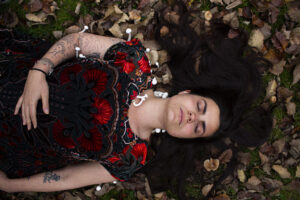
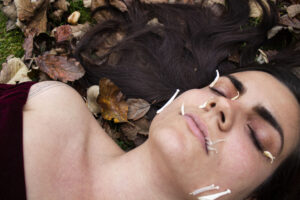
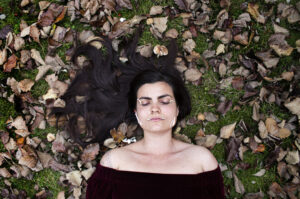

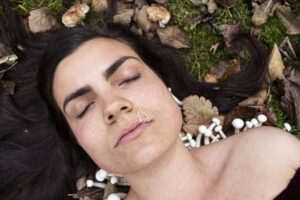
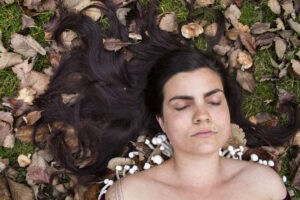
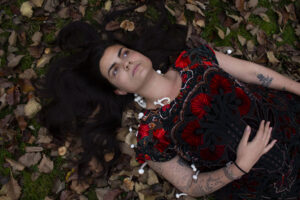

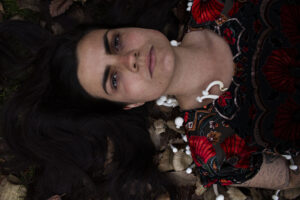

First trial photo shoot. Using real mushrooms to apply to the face, using eyelash glue.
Focusing on Ophelia painting as inspiration.
Notes:
- Out doors worked better for more natural and aesthetic photos
- mushrooms were quite heavy to use, wire seemed to work well to get them to hold up
- seemed too “beautified”
Future plans:
- work a bit darker
- use vaseline, or other substance on the face
- add the mushrooms in to it